-
Senior Member
registered user
Yeah, Elizabeth.... I haven't been east of Castle Rock in a long time, but I know where it is. I grew up (sorta  ) in Denver, then Boulder for the university thing, then 20 years in Colorado Springs, and now back to the same house in Denver for my second childhood.
) in Denver, then Boulder for the university thing, then 20 years in Colorado Springs, and now back to the same house in Denver for my second childhood.
There was an obscure law passed in 1877 that mandated barometric sensors in all computers sold in Colorado - you take them away from the high plains, and they fail randomly. It was supposed to keep people from leaving after they found out how hard frontier life was. (If I remember right, there was an episode about it on Dr. Quinn, Medicine Woman.)  I'd say your best bet is to move back here.
I'd say your best bet is to move back here.
Or set up your own data-recovery business. Hosed NTFS drives aren't going away anytime soon.
I can't figure out what the recovery people do for a flat rate of $1000. In my opnion, someone who knows what you need and has the tools to do it would offer to look at the drive's partition table and the NTFS Master File Table for their minimum labor charge of a half hour. Counting the time it takes to write up the ticket, just doing that much - which would give both of you an idea of how much work is involved - would take 10 minutes.
The folks at harddriverecovery.org disagree, saying "Avoid shops who claim they must 'see the drive' first hand in order to give an estimate." They offer flat-rate pricing and free demos of recovery software you can buy, but you have to hunt around to find the downloads. There's curiously little information about their software and none about their pricing.
But there is a warning on almost every page that amounts to saying that if you do it yourself you risk messing things up beyond all help, while they themselves give customers back their data 98% of the time. Hmmmm. On one page I did see the advice that writing to the disk with one of the puny utilities available to mere mortals could well destroy what you're trying to save.
Well, duh  Always work on a copy until you've wrung every "bit" of information out of it that you can. And what's the deal with their .org domain - they sure look like a for-profit company. I think I'd file them under the "Avoid shops who...." category.
Always work on a copy until you've wrung every "bit" of information out of it that you can. And what's the deal with their .org domain - they sure look like a for-profit company. I think I'd file them under the "Avoid shops who...." category.
Well, anyway. I went to Google and searched on a few different sets of terms. Using ntfs recover will get you a boatload of hits, which I haven't looked at closely, but here's commentary on some sites I pulled up with other search terms.
(Please, please note that I haven't used any of these tools and can't say any more about them than this!)
- Free software - most of what you find requires Linux or Unix, and probably will do a few things but not everything that a full-featured, full-priced package would do. And most of them probably focus on recovering data other than from NTFS. Some are easier to find if you use the search term forensics:
- https://sourceforge.net/projects/air-imager - front end for Unix/Linux tools like dd - possibly not for file-level work;
- https://sourceforge.net/projects/foremost - looks for files' beginnings and ends - must be compiled before running on *nix - info very skimpy;
- www.linux-forensics.com - Penguin Sleuth Kit - Knoppix live CD with forensic tools instead of some other applications;
- www.sleuthkit.org - forensic tools to run under Linux - the site mentions NTFS metadata so they might at least be able to see what your drive's problem is;
- www.sysinternals.com/ntw2k/utilities.shtml - NTFSInfo, NTRecover, Remote Recover - see note about sysinternals below.
- Corporate software - $1000:
- www.winternals.com - Administrator's Pak - see note about sysinternals below.
Sysinternals/Winternals - Their free utilities are on the sysinternals site, and the three I mention are read-only. In addition to that limitation, the free version of Remote Recover is even more limited to reading only 100 MB. The full version of Remote Recover is in the corporation-targeted Administrator's Pak on their winternals site. They have other freebies besides these utilities, and I've used a couple. I'd trust the software to do what they say it'll do.
I think the Steve Gibson behind Automated Image & Restore is the same as the one at grc.com. His site has good information about some security issues and some useful and nifty utilities. In the consumer-products division, I'd choose his unless a long session with a search engine turned up something else so overwhelmingly tempting that I'd wonder why it didn't cost lots more than the three I mention here.
Okay, so a few other observations. The messages you posted from Knoppix show that it finds your USB ports - as expected. To find out what drives it recognizes, open a terminal window and type $ cat /etc/fstab - lines that start with # are comments, lines that start with /dev/hd are hard drives, and I don't know what a USB drive would start with. Maybe /dev/ub.
You'll probably recognize floppy drives (/dev/fb*) and two or three names for each CD drive, like /dev/cdaudio and /dev/dvd and possibly /dev/scd* (due to the confusing treatment of CD drives on a regular hard-drive bus as SCSI drives).
If you think you recognize the usb drive in /etc/fstab, you can safely view the partition table with $ sudo fdisk -l /dev/uba (or whatever the drive is called). Actually, you can safely view any drive's partition table this way so long as you use the -l option !!!. (That's the lower-case version of L.) This tells fdisk to list the table and quit instead of going into table-editing mode.
That's all I can think of for now.
-- Ed
-
If you have a bootable Win2k or XP install disk,
Boot from the CD
Select Repair
Select Using the Recovery Console (RC)
When the Recovery Console Prompt appears,
Type Help, press enter
Look for Diskpart, Fixboot and FixMBR for brief explanations
Run diskpart at the command line to see what the RC thinks your partitioning is.
I think you'll need to run both FixBoot and FixMBR to (possibly) solve your problem.
Type Exit to reboot the PC
Hopefully, all will be well again.
Hope this helps,
Jim
-
i have been away for a bit, now i will hopefully have a chance to resolve this matter. thanks for the input guys, i will keep you updated on the outcome soon.
-
alright guys, thanks for all the input.
i tried the repair feature and it didn't see my external drive.
what i ended up doing was getting "get data back" software for NTFS, and read the files, got most of my data back uncorrupted.
CASE CLOSED.
thank god
Similar Threads
-
By alex2004 in forum MS Windows & New to Linux
Replies: 4
Last Post: 06-17-2005, 11:20 PM
-
By s-m-n in forum Hardware & Booting
Replies: 4
Last Post: 04-23-2005, 08:50 PM
-
By Josh83 in forum Hdd Install / Debian / Apt
Replies: 3
Last Post: 04-03-2005, 05:50 AM
-
By Pex_boa in forum Hdd Install / Debian / Apt
Replies: 7
Last Post: 04-10-2003, 08:20 PM
-
By A. Jorge Garcia in forum Hdd Install / Debian / Apt
Replies: 9
Last Post: 03-17-2003, 09:57 AM
 Posting Permissions
Posting Permissions
- You may not post new threads
- You may not post replies
- You may not post attachments
- You may not edit your posts
-
Forum Rules

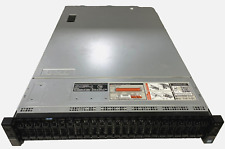
DELL PowerEdge R730XD 24x 2.5" Server Dual 750W Dual Heatsink - BareBones TESTED
$269.99
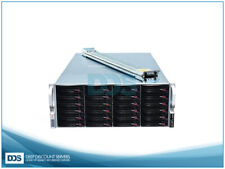
Supermicro 4U 36 Bay Storage Server 2.2Ghz 16-C 128GB 1x1280W Rails TrueNAS ZFS
$725.06
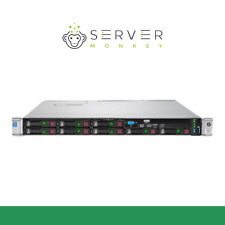
HP ProLiant DL360 G9 Server | 2 x E5-2660V3 2.6Ghz | 64GB | 2 x 900GB SAS HDD
$339.00
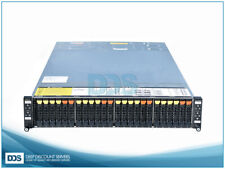
H261-Z61 2U 24SFF AMD Server 8x EPYC 7551 256-Cores 256GB RAM 8x25G NIC 2x2200W
$2612.18
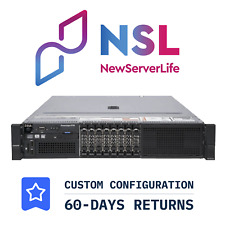
DELL PowerEdge R730 Server 2x E5-2690v3 2.6GHz =24 Cores 32GB H730 4xRJ45
$274.00
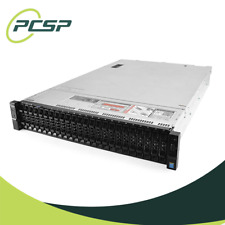
Dell PowerEdge R730XD 28 Core Server 2X Xeon E5-2680 V4 H730 128GB RAM No HDD
$389.99
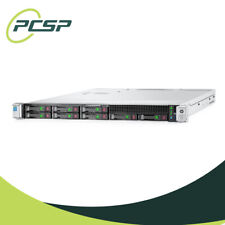
HP Proliant DL360 Gen9 28 Core SFF Server 2X E5-2680 V4 16GB RAM P440ar No HDD
$196.95
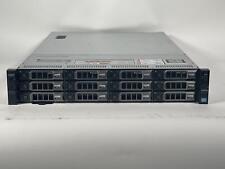
Dell PowerEdge R720XD Xeon E5-2680 V2 2.8GHz 20 Cores 256GB RAM 12x4TB
$510.00

HP ProLiant DL380 Gen9 16SFF 2x E5-2680v4 2.4GHz =28 Cores 64GB P840 4xRJ45
$353.00

Dell Poweredge R730xd 2.5in 2x E5-2690 v3 2.6ghz 24-Cores 64gb H730 2x 750w
$189.99



 Reply With Quote
Reply With Quote










